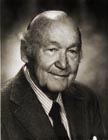"Passaggio" is of course the Italian School word for "passage." It actually is an acoustical phenomenon which occurs from approximately B-flat to F-sharp in the head voice range. This is why Alan Lindquest describes the passaggio as the entire range of the head voice. A slight acoustical change will occur at each half-step when the throat is open and free. Some teachers describe this as "vowel alteration". Vocal science has proven that we cannot pronounce "pure vowels" above the staff or even in the passaggio area without closing the throat. I have often found that problems can arise when a singer begins to coach repertoire. He/she might be asked to pronounce "pure vowels" throughout the passaggio and above the staff. The result is a closed throat and a "throaty tonal quality". Clarity of diction is actually achieved through the freedom in the throat as the singer ascends into the higher register. Vowels must be allowed to alter in order for the throat to stay open on ascending passages.

Alan Linquest
